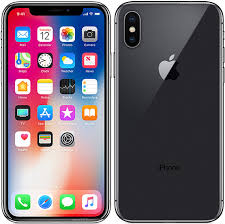Apple iPhone X

The iPhone X is Apple’s flagship product. Its development took roughly two years. How much did Apple spend on its development (in other words, how far into negative territory did the cumulative cost curve go)? Apple spends about $10 billion annually on R&D (6% of revenue), but it doesn’t break this number down by product, so we have to make some guesses.
Apple has R&D investments in a lot of different hardware and software products, not to mention autonomous cars, health applications, online radio and so forth. I’m going to assume that the smartphone business is their largest consumer of R&D, so let’s say 20% of their total cost spend. If we apply that over a two year period, we come up with a number of $4 billion. That’s how deep the cost curve goes before a single phone is sold.
The next question is how many iPhone Xs Apple sold, and at what amount of profit. Here we have better public information. It has been estimated that Apple sold over 12 million in the product’s first quarter and probably as many in the following quarter. Apple makes a gross margin of roughly 64% on the $999 iPhone X.
But wait – are all those iPhone X sales incremental revenue for Apple? How many of those buyers were driven specifically by the features of the iPhone X? In other words, how much of that profit would Apple have foregone if it had not developed the iPhone X? That’s the number we’re looking for.
Obviously, it’s impossible to know the answer to that question, but a key part of it is lost sales prevented. In other words, if Apple had stuck with its line of older smartphones and the Apple 8, how many buyers would have opted instead for Samsung or other competitive phones?
Like I said before, this isn’t easy. But Apple is going to have much better information on all this than I am as an interested observer. I’m sure they have models for how frequently customers upgrade phones and what features are the best sellers.
So let’s just assume that 3 million (25%, probably a conservative estimate) of those first quarter iPhone Xs were truly incremental revenue to Apple, at a profit of $640 per phone. That gives us a profit uptick of $1.9 billion in one quarter. If we assume similar numbers for the iPhone X’s second quarter of sales, that brings us to $3.8 billion, just below our estimated spending of $4 billion.
Apple takes roughly half a year to break even on its R&D investment in the iPhone X. That’s not a bad business to be in.
Next up: Spotify.
